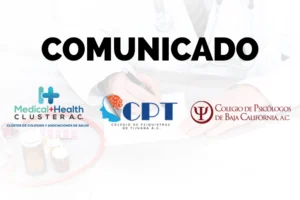En atención a la creciente preocupación sobre la confianza en...
Leer más
Ivermectin is a wonder drug, but not a cure-all

It was a late September day in 2019 when I first learned about ivermectin.
I had just started my postdoctoral position at UCLA studying the human-infective threadworm Strongyloides stercoralis. Standing in our lab’s parasite room in my disposable lab coat, my hands double-gloved up to my elbows and my mask and goggles pressed firmly against my face, I still felt exposed.
Individual S. stercoralis worms are almost invisible to the naked eye. But when I pulled a petri dish of worms from the incubator, I saw what looked like a tan web shimmering on top of the black pellets that filled the dish.
Under the light of the microscope, groups of worms slithered on top of each other. Some moved together in strands that seemed to wave in the air, as if trying to move closer to the warm light of the microscope — a light, I soon realized, that ran scarily close to human body temperature.
Although it was unlikely, our laboratory manager assured me that if I did get infected, there was a readily available and effective drug that could cure me: ivermectin.
Recently, ivermectin has become a household name, with some touting it as a treatment for COVID-19 and others presenting scientific evidence refuting that claim. But before ivermectin gained its pandemic-era notoriety, to parasitologists and people living in parasite-endemic regions, ivermectin was already a wonder drug.
In the late 1970s, scientists from the Kitasato Institute discovered a new bacterial species called Streptomyces avermitilis in the soil next to a golf course in Itō, Japan. In collaboration with Merck, the researchers found that S. avermitilis produced a compound they named avermectin, which killed intestinal parasitic worms in mice. With some biochemical tweaking, they produced ivermectin, a safer and more effective version of the molecule.
Approved in 1981 for treating intestinal parasitic worms, lice, and ticks in animals, ivermectin soon became a blockbuster drug, leading to widespread use in livestock, horses, and dogs.
Seven years later, regulators approved ivermectin for use in humans, specifically for river blindness, a debilitating parasitic worm infection that primarily affects poor rural communities. Scientists soon found that ivermectin could also cure other human parasitic worm infections and head lice. In 2015, Satoshi Ōmura and William C. Campbell shared the Nobel Prize in Medicine for discovering it.
In 2020 as the pandemic progressed, some scientists wondered if ivermectin could also treat COVID-19. Many early studies, however, were statistically underpowered at best and had flawed study designs or potential data manipulation at worst, leading to public confusion and politicization of the drug.
Well-designed and adequately powered clinical trials are now revealing that ivermectin is not effective at preventing or curing COVID-19. While the discourse surrounding ivermectin has become fraught, it’s also brought to light some important lessons as we make our way through the ongoing pandemic.
Repurposing drugs to fight COVID-19 is a valuable strategy. Data from the ongoing TOGETHER Trial indicate that while ivermectin is ineffective against COVID-19, the common anti-depressant drug, fluvoxamine shows promise in reducing COVID-19 hospitalizations.
Secondly, new sources of wonder drugs exist all around us. S. avermitilis is the only bacterial species known to produce avermectin. There are likely many other species that produce unique compounds with therapeutic potential waiting to be discovered.
Finally, the hype around ivermectin has underscored the importance of clearly communicating the limitations of studies for potential COVID-19 treatments. Scientists and the media need to indicate where study designs fall short, use inappropriate study samples, or analyze data improperly.
Ivermectin alleviates an immeasurable amount of suffering worldwide. While the data show that it’s not a useful treatment for COVID-19, safe and effective treatments are working their way through the research pipeline. Maybe one of these new treatments will become the next wonder drug.
Créditos: Comité científico Covid




